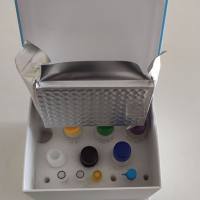Nucleotide excision repair (NER) is one of the most important systems in eukaryotes for overcoming DNA damage caused by environmental agents, such as ultraviolet (UV) radiation and chemical mutagens. NER in eukaryotes has been studied by genetic analyses of mainly human, rodent, and yeast repairdeficient mutants (1 ,2 ). In particular, cultured cells derived from patients with xeroderma pigmentosum (XP), a human autosomal-recessive disease causing defects in NER, as well as from rodent excision repair crosscomplementing (ERCC) mutants have contributed to the elucidation of the molecular mechanisms of excision repair. Complementation analyses by cell fusion between cells from XP patients have defined seven complementation groups (A-G) and one variant (XP-V). With the exception of XPV and possibly XPE (see Chapters 7 and 9 ), these genes have been cloned and their counterparts from rodent and yeast identified (1 ,2 ). Elucidation of the molecular functions and interactions of these gene products have been advanced by the use of effective and powerful cell-free reconstitution systems. Wood et al. 1 have developed a cell-free system utilizing UV-irradiated plasmid DNA and human cell extracts in which both UV-dependent NER and the differences between wild-type and XP cells are reproduced (3 ; see Chapter 29 ). Functional complementation between cell extracts in this in vitro system has proven effective in the isolation and identification of new factors involved in NER (4 ).






